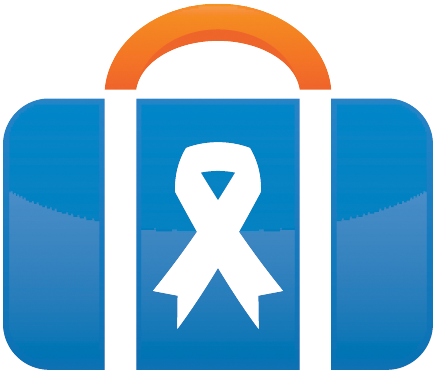Marketing is an essential component of your organization’s strategy because it’s key for your donor acquisition, retention, and broader fundraising strategies. In particular, your marketing strategy is an important aspect of your event.
If your organization is planning on hosting an online auction, fun run, carnival, or any other type of event, you need to know who you’ll invite and how you’ll encourage them to attend.
In this article, we’ll discuss nonprofit marketing for your organization’s next event and how you can identify and leverage audience information and segmentation to maximize those marketing efforts. We’ll focus on strategies covering:
- How to segment your supporters.
- Potential segments to create.
- How to frame your invitation.
- Combining invitations with event marketing.
Consider who among your supporters would best respond to an invitation or digital marketing materials that highlight your upcoming auction. Will college students with little funding to their name make up that audience? Chances are, you’d instead be trying to reach your major donors.
Learn how you can incorporate these types of strategic decisions into your own marketing strategy by leveraging segmentation. Let’s get started.
How to segment your supporters
A great number of your nonprofit’s marketing and outreach initiatives require effective use of segmentation. You likely have different goals when reaching out to specific audiences in your network, such as collecting the second, or “golden,” donation from first-time donors or asking a major supporter to get involved with your next capital campaign.
You should have some segments ready to roll in your nonprofit’s database already. Consider which attributes are the most important for your outreach efforts considering both your event invitations and your marketing strategy at large. This way, you can create segments that will both encourage supporters to attend your event and become long-term donors and advocates for your cause.
Often, nonprofits will base their audience segments on attributes like:
- Frequency of donations. This describes how often supporters give or otherwise contribute to your cause.
- Recency of donations and engagement. If donors recently engaged with your cause, they may be more likely to attend an event. But if they’ve lapsed, you might approach them differently.
- History of supporter engagement. Consider how supporters got involved with your cause in the past. What inferences can you make about their interests based on this engagement? Then, use that information to craft an appealing invitation.
- Amount donors give annually. You wouldn’t approach your major donor the same way as your average supporter. Consider the amounts that supporters contribute to your cause to determine the best outreach strategy for them.
- Motivation behind engagement. Some supporters may give because they have close personal ties to your cause. The more you know about these connections, the more likely you’ll be to find the marketing message that best appeals to them.
When you set up insightful segments within your donor database, you’ll be able to use this information for more than one event. Each of your emails will be better personalized due to set segments and you’ll be able to use the specific details that will keep each audience member engaged with your cause for a long time.
Potential segments to create
The segments you use to target your event attendees are highly dependent on your organization’s goals and objectives. Therefore, they’ll look different between different organizations. For example, a dog shelter might segment its audience based on who prefers cats and who prefers dogs, but this information would be useless for a food bank.
Below we’ve listed out some of the common segments that nonprofits use to target their supporters and how you can use those segments to craft better event invitations. We’ll use the example organization Save the Puppies to illustrate how you could address each audience segment.
Volunteers
Volunteers are vital to the success of your organization at large. When you’re sending out invitations for your event, you might either invite them to help work the event or to attend as a volunteer engagement strategy in appreciation of their hard work.
When you send your invitation, reference your volunteers’ past experiences with your nonprofit. For example, you might say:
“Here’s a blast from the past! Do you remember the amazing time you had volunteering at the annual 5K for adoption last year? Here’s your chance to make this year’s race a success too.”
Or, if your nonprofit is inviting volunteers to attend, you might instead say:
“In recognition of all of the hard work you’ve put in with Save the Puppies, we’d like to invite you to attend our annual gala.”
Referencing their past interactions with your nonprofit shows that you appreciate the hard work that your volunteers put in to help your nonprofit succeed.
First-time donors
The average new donor retention rate among nonprofits rests between 18 and 25%. But the more you can get a new donor engaged, the more likely you are to increase this rate and retain supporters for the long haul. Inviting new donors to your upcoming event is a great way to solidify their engagement with your cause.
In your invitation, you might express gratitude for their contribution and present the event as an opportunity to get more involved. For example:
“Thank you for your generous contribution to Save the Puppies. If you’re interested in getting more involved in the movement to get stray puppies off the streets, come to our annual gala. You’ll enjoy a night of delicious food, music, a silent auction, and even a guest appearance from the puppies your donation helped save.”
Similar to your volunteers, this type of outreach shows first-time donors that you appreciate the support they’ve provided to your organization so far. It also provides details about the amazing time they’ll have at the event to intrigue them further.
Major donors
Major donors already have a deep investment in your organization’s success. By inviting them to an event, you have the opportunity to show them how important they are to your cause with special perks. For example, you might invite major donors to take part of your VIP package at your upcoming event.
Presenting these perks is especially important if fundraising is the goal for your event. You might say something like:
“Take a seat at the VIP table at the next Save the Puppies gala! Discuss the future of animal medicine with rising-star veterinarian Michael Smith who will also have a seat at the table. Then, peruse the silent auction where you’ll have the chance to bid on a dream vacation to Greece.”
This example shows how your organization can promote high-value opportunities at an event to intrigue your major supporters. Plus, they’ll likely be the ones bidding on high-ticket items at an auction like a dream vacation.
Event sponsors
Your interactions with your event sponsors will likely be dictated by the type of sponsorship you receive. Double the Donation’s corporate sponsorship guide explains that there are several types of sponsorships your organization should be aware of including financial, in-kind, media, and employee giving sponsorships.
Maybe you’ve received sponsorships in the form of in-kind donations for your silent auction or perhaps a local business wrote you a check to help make your event possible. Either way, you need to make sure they feel appreciated for their contributions. One way to do this is to invite them to attend the event they made possible. You might say something like:
“Thank you so much for your generous sponsorship for the annual Save the Puppies Poker Night. We’d like to invite you to attend the event to see the great success you’ve made possible!”
Try tiering your event sponsorships and providing discounts for your event depending on what they’ve contributed. For example, you might offer free admission for company leaders who provided thousands of dollars for your event. But you might give a discount for another that provided a couple hundred dollars.
How to frame your invitation
How you frame your invitation to your supporters will depend on the platform you’re using to contact your supporters. For example, if you’re inviting them on paper, you could provide a QR code leading supporters to your registration page. Meanwhile, a link would suffice if you’re inviting them through email outreach or social media.
First, consider the platform you’re using for outreach and what elements you’ll need to include so supporters have what they need to RSVP for your event. Then, start thinking about the elements that you’ll need to include in the invitation itself.
Lay out an outline that includes the necessary elements that every supporter segment will need to attend the event. This will include basic components such as:
- The event location.
- Time and date of the event.
- Your organization’s branding.
- The type of event you’re hosting.
Then, build out your invitation further using the segments you’ve identified to engage your audience. Consider who would respond most positively to elements such as:
- A note of appreciation for past engagement with your cause.
- Stories of the impact various campaigns had in the community you serve.
- Reminders about past events.
- Teased details for the upcoming event and the entertainment you’ll provide.
Put yourself in the shoes of each supporter segment when you craft your event invitation. Really consider their motivations and what will most intrigue them about your upcoming event. You might even conduct some A/B testing to test out different messages and gather some concrete data about their receptiveness among your supporters. Then, you can use the results from that testing to create more successful invitations in the future.
Combining invitations with event marketing
In addition to using your segments to craft impactful invitations for your supporters, consider how you can use additional marketing strategies to amplify your message and recruit even more event attendees.
You might decide to use social media posts, additional emails, and standard marketing strategies to drive additional engagement with your prospective supporters. These will also help your organization drive new support from those to whom you may not be able to email or send a direct invitation.
The best part of combining strategies? You can retarget those who are interested in your event but haven’t signed up yet! Feathr’s nonprofit advertising guide discusses how your nonprofit can use retargeted ads to recapture the attention of those who visit your website, and specifically your event registration page. According to that article, the process will look like this:
- A prospective attendee visits your nonprofit’s event registration page, probably from your organization’s event invitations.
- That prospective guest ends up leaving without completing their registration, navigating to a different page or simply shutting down their browser.
- The next time that supporter is online, they’ll see advertisements in the margins of other articles or on their social media feeds that remind them of their interest in your event.
- They click through the ad and can pick up where they left off on your registration page!
These types of ads make a great addition to your well-crafted invitations because they prevent your supporters from forgetting about their initial interest in your event. If they click through your invitation, they’re more than likely interested in the event, but may have been distracted before being able to complete their registration.
Targeted ads provide the small push these supporters need to complete their registration and attend your next event.
You work hard to host a great event for your nonprofit’s supporters. Therefore, you want to make sure your guests, supporters, and attendees are all excited about the opportunity as well! Segmentation can be used to craft personalized event invitations, emphasizing those aspects of the event that will most intrigue each group of prospective attendees.




